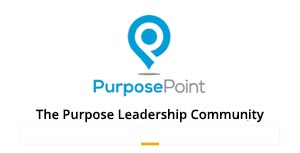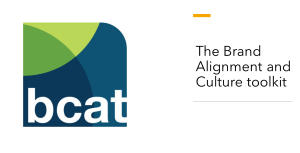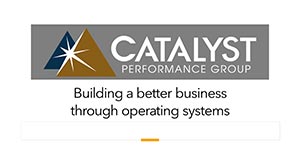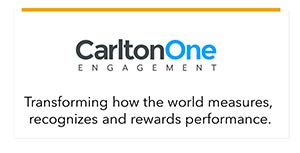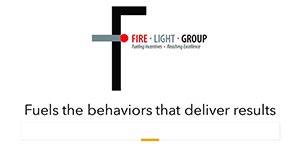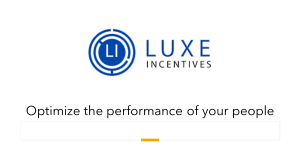The Human Capital Factor: Turning People Metrics into Durable Alpha for Investors and Companies
.jpeg) This Enterprise Engagement Alliance Stakeholder Management Forum YouTube show and feature article finds broad agreement that human capital factors are highly predictive of future equity value creation but that the business world remains in the early stages of understanding the connection and how to operationalize it.
This Enterprise Engagement Alliance Stakeholder Management Forum YouTube show and feature article finds broad agreement that human capital factors are highly predictive of future equity value creation but that the business world remains in the early stages of understanding the connection and how to operationalize it. Key Findings
How Engagement Affects Business Valuations
How Public-Equity Investors Are Finding Winners
What Valuers Will Accept—and Why
Where We Really Are—and What to Do Next
Click here to subscribe to the ESM weekly e-newsletter.
Human capital is not warm and fuzzy. Research and practical experience demonstrate that it’s a measurable and investable driver of future equity value creation. Organizations that focus on human capital not only have a distinct competitive advantage but the potential to outperform others in the stock market by 4% or more per year. Nonetheless, the business world remains in the early stages of formally accounting for human capital or having access to sufficient data to make the most meaningful evaluations.
Click here to watch or listen to the show. The discussion is part of the Enterprise Engagement Alliance’s Stakeholder Management Forum and Library for Leaders, Academics, and Investors to promote dialog and information sharing on effective practices in stakeholder management and total rewards among business leaders, practitioners, academics, and the investment community.
The show and this feature article provide perspectives from four experts looking at the issue from different points of view:
- Business valuation: Dave Bookbinder, Executive Director, Valuation Services, Haefele Flanagan, Maple Shade, NJ,an accounting and advisory firm, and an EEA steward of content on valuation for the Stakeholder Management forum.
- Investment management: Jason Britton, Founder, Woelf Royce Companies, a Charleston, SC based wealth management firm, and an EEA steward of content on investment management.
- A human capital analytics firm for investors: Bart Houlahan, Partner, Irrational Capital, Paoli, PA, creator of the Human Capital Factor; Co-Founder of B-lab, and steward of leadership content.
- Mergers and acquisitions: Laura Queen, Founder, CEO, 29Bison, a Doylestown, PA, mergers and acquisitions and due diligence firm specializing in human capital, a steward on human capital analytics.
Key Findings
Houlahan opened the discussion with the simplest—and most disruptive—investment thesis in the session: companies that treat their people well outperform in the equity market; not because of higher pay or shinier perks, but because of the intrinsic motivators that shape how people show up for work every day.
Drawing on more than 20 years of employee survey data across 70,000 companies (750 million data points), Irrational Capital isolates the Human Capital Factor from signals like pride, recognition, purpose/vision alignment, trust, and transparency. The result isn’t a feel-good narrative; it’s a tradable edge, he says. In replications spanning 14 consecutive years, portfolios tilted toward high intrinsic motivation outperformed by roughly four percentage points annually, across sectors and company sizes. (See ESM: The Holy Grail of Investing and HR? New Solution Connects Human Capital to Return on Equity.)
Three points stand out, he says.
- Recognition and appreciation top the list of value drivers. For five years running, the single most powerful predictor Houlahan sees is whether employees feel appreciated and recognized.
- Extrinsic rewards are hygienic. Pay and benefits matter as table stakes; they’re just not what moves motivation—or markets—over time.
- It takes a holistic approach. Extrinsic rewards keep people from leaving; intrinsic motivators make them win. When you manage recognition, purpose, trust, and manager quality as operating metrics, you don’t just get a better culture—you get lower risk, higher multiples, and durable alpha.
When employees feel recognized, aligned to purpose, and well led by their managers, they produce more, innovate more, stay longer, and deliver steadier customer experiences, Houlahan explains. This improves revenue quality and margin durability and—crucially for valuation—reduces company-specific risk.
How Engagement Affects Business Valuations
In financial terms, according to Bookbinder, stronger human capital lowers the cost of capital; weak culture raises it. Bookbinder argues it’s time to formalize this in valuation practice as a human capital adjustment inside the cost of capital, akin to today’s company-specific risk premium.
On the other hand, he adds, because of the financial and tax consequences of business valuations, accountants can’t just draw numbers out of a hat. It may take years before human capital factors are formally accepted in valuations, he says.
In the middle market, clean people data is often scarce. That’s the reality Laura Queen’s team walks into—and tries to fix—deal after deal, she says. 29Bison runs a 165-point human-capital-due-diligence tied explicitly to the investment thesis, blending whatever quantitative records exist (turnover, tenure, safety, absenteeism) with on-the-ground qualitative interviews that surface the true employee experience.
What 29Bison looks for:
- Leader and manager quality (the most immediate performance lever).
- Hot-spot analysis of turnover and early-tenure exits by function and supervisor.
- Fairness signals—internal equity and external competitiveness.
- Career pathways and internal mobility, including AI-readiness and learning systems.
- Data fitness—a practical plan to create the missing listening posts (pulse surveys, structured 1:1s, rapid role-clarity audits).
How Public-Equity Investors Are Finding Winners
Jason Britton says his investment management company arrived at the same conclusion from a different direction: modern financial statements bury what matters most under “expenses.” So, his company triangulates from the evidence that leaks out—workforce stability, tenure, turnover, safety events, absenteeism, training spend, survey participation and results, and compensation structure (e.g., CEO-to-median pay). The trick, he says, is not to overweight any single measure, but to stack multiple, sector-appropriate indicators and then invest within peer groups.
Two practical factors drive his process:
- Consistency beats brilliance. Stable, high-functioning cultures show up as fewer negative surprises across many small signals.
- Within-sector comparison is essential. Turnover in retail isn’t the same turnover rate as in other industries.
What Valuers Will Accept—and Why
Bookbinder reminds listeners that valuation isn’t vibes; it’s documentation. Conclusions must survive audit, litigation, and tax review. That doesn’t argue against culture; it argues for better measurement. His proposed end state:
- A documented human capital assessment—covering manager effectiveness, recognition norms, role clarity, safety, retention in critical roles, and training relevance—maintained as a time series.
- A discount-rate adjustment for human capital quality (or deficiency), justified by that record, just as valuations do today for customer concentration or cyclicality.
- Scenario analysis on cash flows tied to regrettable attrition and time-to-productivity in revenue-critical roles.
Don’t forget the customer. A final, vital link: employee and customer engagement move together. In multi-site studies, properties that outperformed financially typically showed high engagement on both sides of the counter. Treat the employee-customer system as one flywheel; measuring only one half leaves value (and risk) unseen.
Where We Really Are—and What to Do Next
On the maturity of human capital accounting in the investor world, the panel landed between 2.5 and 4 out of 10. Early innings, yes—but the playbook is clear enough to act now, they agree.
Their advice.
For acquirers (during first 100 days):
- Stand up a lightweight listening system (pulse survey, 1:1 templates, “ask me anything” cadence).
- Map hot spots by leader and role; coach or change managers fast.
- Institutionalize recognition rituals that are specific, frequent, and peer-visible.
- Publish role clarity (how each job advances the strategy) and refresh performance/feedback cycles.
- Track a short KPI set: voluntary/“regretted” turnover in critical roles, new-hire 6/12-month survival, recognition index, manager effectiveness, internal fill rate, safety, and absenteeism.
- Build a composite, sector-relative people score blending turnover, tenure, safety, training, survey participation/outcomes, disclosure quality, and pay structure—then rebalance to the leaders.
- Document human-capital practices and outcomes quarterly.
- Pilot a human-capital notch in your discount rate and run sensitivity on cash flows tied to retention and time-to-productivity.
Enterprise Engagement Alliance Services
 Celebrating our 15th year, the Enterprise Engagement Alliance helps organizations enhance performance through:
Celebrating our 15th year, the Enterprise Engagement Alliance helps organizations enhance performance through:1. Information and marketing opportunities on stakeholder management and total rewards:
- ESM Weekly on stakeholder management since 2009. Click here to subscribe; click here for media kit.
- RRN Weekly on total rewards since 1996. Click here to subscribe; click here for media kit.
- EEA YouTube channel on enterprise engagement, human capital, and total rewards since 2020
 Management Academy to enhance future equity value for your organization.
Management Academy to enhance future equity value for your organization.3. Books on implementation: Enterprise Engagement for CEOs and Enterprise Engagement: The Roadmap.
4. Advisory services and research: Strategic guidance, learning and certification on stakeholder management, measurement, metrics, and corporate sustainability reporting.
5. Permission-based targeted business development to identify and build relationships with the people most likely to buy.
Contact: Bruce Bolger at TheICEE.org; 914-591-7600, ext. 230.







